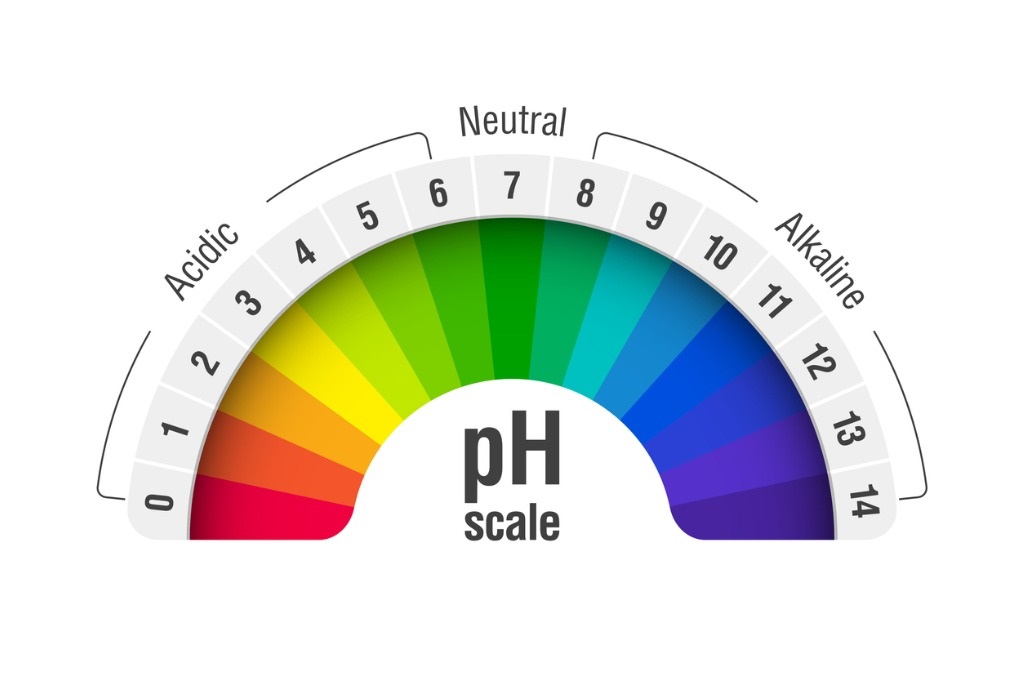Possibly one of the most searched for health topics in 2020 was how to transition to a mostly alkaline diet due to its supposed health benefits. Perhaps even more interesting is that we are spending millions of dollars buying alkaline water. Recently, a close friend of mine asked me what I knew about drinking alkaline water, stating that many of her friends are true believers.
As such, I told my friend that I’d write a simple article on the issues surrounding acid and alkaline diets. I’m not approaching it from a sales viewpoint, unlike so many articles on this subject. Rather, I’m writing what I’ve learned after a strict study of the facts as compiled by some notable doctors in the natural health arena.
What Science Says About Alkaline Water
To answer my friend, I wanted to see what the science has to say about the definition of alkaline water:
“Alkaline water is advertised as being ‘ionized’ as a result of electrolysis, but the same result could be achieved by dropping some baking soda (sodium hydroxide, or NaOH) into ordinary water.
“Alkaline water’s cancer-cure claims and other fantastic promises can be found on labels of health-food and other stores. According to medical experts, the claims themselves are nonsense. If body [blood] pH rises much above its normal value of 7.4, problems would immediately ensue. But when you drink alkaline water (at least the mildly alkaline sort that is sold commercially), the hydrochloric acid in your stomach immediately neutralizes it.”
And right away we have confusion. Drinking water of any kind will not stimulate hydrochloric acid (HCl) secretion in the stomach. For the HCl to neutralize the alkaline water, the water must first encounter food that is mixed with HCl—which is secreted from digesting that food. Other than that, the statements above are accurate.
If you’re trying to alkalize the blood, alkaline water is a waste of time and money. The blood pH, which is kept slightly alkaline, is regulated by the body’s system of homeostasis to protect the blood from pH imbalance. An assault of high doses of alkaline water will not affect the blood like it can the digestive tract. (You will read more about how homeostasis works in the blood later in this article.)
Intestinal health, on the other hand, can be disrupted by alkaline water as it could challenge the lactic acid environment of the bowel, which is supposed to be kept slightly acidic. This may disrupt the gut flora and result in candida overgrowth, among other issues.
Some Interesting Facts on Acid and Alkaline Awareness
Many of us are not even conscious of our acid/alkaline pH balance, nor do we know what symptoms to look for when our body is either too acidic or too alkaline, let alone how to manage our diet or maintain pH within a normal range! Sadly, trying to find information on Dr. Internet is similar to chasing down facts in a whirlwind. For the most part, the pros and cons come from sales pitches and misinformation. Therefore, it becomes difficult (if not impossible) to learn how to make the changes necessary to maintain a normal pH balance.
It’s important to work on this issue to avoid suffering from unresolved health issues, including cardiovascular disease, diabetes, fragile bones, moodiness, muscle cramps, and others. So, yes, maintaining a normal pH balance is essential. At the very least, you should pay attention to signs that you might need to check it out. Even though some of this information can be a bit complicated, please keep reading. Given all the confusing and inaccurate articles you will find on the subject, I hope this one will provide some starting points to guide you.
What Is pH?
The letters “pH” stands for “potential of hydrogen.” Why hydrogen? Because it sets the medium in which the body can operate. The hydrogen ion is the potentiator of the chemical reactions in the body. Hydrogen is the most explosive substance known to us. The sun is made of hydrogen.
3 Keys to Understanding pH Balance
Key #1: The body is mostly made of acids. RNA and DNA are acids. The skin, scalp, gut (see note below), ear canal, vaginal tract, and urinary tract all stay acid. However, the blood is kept homeostatically in a slightly alkaline pH because the alkalinity protects the blood as a buffer against the acid nutrients it is circulating and delivering. Amino acids, nucleic acids, fatty acids, vitamins (the vast majority of which are acid), and carbon dioxide (CO2) are all acids. The blood is an acid handler. Much like a rose gardener needs to wear gloves while pruning roses, the blood has different buffers that help regulate the pH and keep it in a slightly alkaline range. A great example of homeostasis.
A note on the gut: The gut is acid, but the bile is alkaline. The alkaline bile mixes with chyme, which is full of hydrochloric acid. When the two mix together, they neutralize each other and thereby protect the duodenum from damage. Another great example of homeostasis.
Key #2: Food determines pH, up to a point. The pH further depends on 1) the nutrient quality of the food; and 2) whether the body has enough of the right nutrients to make the chemicals required to maintain homeostasis—the process by which the body brings itself back to center. This includes temperature regulation, pH regulation, and others. Therefore, eating a diet of foods that burn acid ash and foods that burn alkaline ash is critical, and those foods must contain whole nutrient complexes.
Key #3: In addition to food nutrients, the body makes its own acids. Acetic acid (made out of fatty acids) is manufactured everywhere in the body. Hydrochloric acid (made out of the chlorides from the foods we consume) is manufactured by the stomach. And the body makes lactic acid in the gut from the lactic acid bacteria we consume in fermented foods. (These increase the microorganisms in the gut, which in turn produce more lactic acid.)
From these three keys to understanding, it is clear that whole vitamin and mineral complexes and fatty acids are critical in helping the body to find its correct pH balance.
The Importance of Acid
I would like to quote from two excellent books to explain the importance of acid in the body. The first quote below is from Folk Medicine by D.C. Jarvis, MD, published in 1958:
“It becomes apparent, as one studies this list [of bacteria that grow optimally on alkaline media of pH 7.4 and above], that microorganisms harmful to the human body grow on an alkaline soil. This is particularly interesting in the light of the evidence that in dairy cows and human beings alike, an instinct exists which leads them to seek an acid intake…
“It seems reasonable to suspect that pathogenic bacteria which are harmful to the body are in the world for another purpose than to cause sickness in human beings. Nature has spread acid vegetation about with a lavish hand, apparently to prevent infestation of the body with pathogenic microorganisms, turning into infection of the body by these same microorganisms. The instinct leading animals and humans to seek acid vegetation and acid liquids has been given as a protection.”
The second quote is from Empty Harvest: Understanding the Link Between Our Food, Our Immunity, and Our Planet by Dr. Bernard Jensen and Mark Anderson, published in 1990 (emphasis mine):
“Why are there periodic reports of plain ascorbic acid helping to fight various colds and infections? The answer probably lies more in ascorbic acid’s pH balance influence (acid/alkaline balance) than any other factor. True to its namesake, ascorbic acid lowers the pH to the acid side of the pH scale. Most infectious pathogenic bacteria thrive in an alkaline pH.”
Symptoms of Alkalosis and Acidosis
Symptoms of alkalosis and acidosis, as detailed by Dr. George Goodheart (the founder of Applied Kinesiology) in his article “The Acid-Alkaline Balance and Patient Management,” are as follows (emphasis mine):
“In general alkalosis conditions are characterized by a slow pulse, itchy crawling sensations, stiffness of joints, and symptoms that occur after rest, such as night cramps, night coughs, and an abnormally high hematocrit.” (Hematocrit pertains to the percentage of red blood cells to the total volume of blood.)
“In general acidosis symptoms relate to oxygen uptake patterns, such as frequent sighing and breathlessness. Patients have insomnia associated with breathlessness and complain of a “lump” in the throat; they have a cold sweat type of perspiration pattern, alternating with a dry skin and a dry hard stool. Basically, the pattern is one of dehydration.
“A word of explanation on the oxygen pattern of the acidosis complex might be in order here. When bicarbonates, which are the normal bases the body uses to prevent acidosis symptoms, become depleted and the carbon dioxide accumulates in the tissues, oxygen cannot be utilized, is not taken up, and is carried off by the venous blood, unutilized. Thus, the patient suffers from suffocation, dehydration, and hyperirritability symptoms.
“In alkalosis many of the symptoms undoubtedly are due to [precipitating] calcium deposits forming in the increased [alkaline] pH environment. The paradoxical deposition of calcium with the obvious calcium deficiency has been discussed before, but the key factor is the fact that calcium precipitates in an excess alkaline environment even though the patient is calcium deficient on a dietary level.” (This, no doubt, is the reason apple cider vinegar works so well in arthritis.)
How to Determine If Your pH Is Balanced
Urine pH test strips: Urine test strips tell you if your pH is within the slightly acid range (5.5–6.5 pH). This is helpful because urine is a useful proxy for how well the chemicals made by your body from the food you eat keep the urine in this slightly acid range. The 5.5 to 6.5 pH range keeps pathogens from growing in the urinary tract.
Saliva pH test strips: Similarly, saliva is a useful proxy for blood pH.
Symptoms of acidosis or alkalinity: Be alert to the symptoms described above. For instance, if you are not sure your stomach is producing enough HCl but you get gas after eating, you know you need either more HCl, lactic acid, or pancreatic enzymes because the microorganisms that produce gas thrive in an alkaline pH.
If you think you are eating a healthy, whole food diet but still find your pH levels out of balance, consider the following two things:
- Your food does not have the range of nutrients necessary and you need supplements and/or better-quality food sources.
- There might be some underlying condition to inquire about with the help of a holistic practitioner.
Checking your pH balance is best done by using Hydrion paper. Follow the instructions from Adjuvant Protocols for Healing: A Practitioner’s Manual on pp. 393–394.
Knowing Which Foods Are Acid and Alkaline
Like everything else in nature, there are variances in foods. Nature is tricky, and it does not always give us a black and white answer. That being said, you can find acid and alkaline food charts that detail what foods are more or less acidic and more or less alkaline. My understanding is that the key to maintaining balance is to provide the body with a wide variety of whole, healthy foods and food supplements. If you get into trouble and find that your pH is off, checking these charts could be helpful.
Remedies to Help Keep Your pH Balanced
Apple cider vinegar (ACV) is at the top of the list. You can readily find ACV in grocery stores. It is made from fresh, organic apples allowed to mature naturally in wooden barrels. Because of its acidifying properties, mothers have used apple cider vinegar to treat ear infections for hundreds of years. While ascorbic acid is an acidifier (and that’s about all its good for because it is not the complete vitamin C complex), the job can be done at much lower cost with ACV.
The acetic acid in ACV works more in the upper GI tract, which is why it’s so good for digestion. It is unlikely to over-acidify the system because it is used quickly as a carbohydrate, which is why it doesn’t have great staying power. You might need it at meals for digestion, or take multiple doses during the day when you feel a cold coming on. A common range that will not over-acidify the system is anywhere from 1 teaspoon to 3–5 tablespoons daily.
Standard Process Cal-Amo is another great acidifier due to its calcium chloride and ammonium chloride. Cal-Amo supports both blood and digestive pH. It lasts longer in the system than ACV. Take 3–6 tablets per day.
If your urine tests alkaline, use Standard Process E-Z Mg (1 stick per day). This product is rich in potassium.
Try this healthy and refreshing vinegar and honey drink: In a cup of warm water, mix a tablespoon of raw, organic apple cider vinegar (Bragg and Eden Foods are both great) with a teaspoon of raw honey (or to taste).
Note: Avoid commercial distilled vinegars and only use organic, raw apple cider vinegar. The distilling process destroys powerful enzymes and minerals (potassium, phosphorus, sodium, magnesium, sulfur, iron copper, silicon, pectin), as well as natural malic and tartaric acids, which are important in fighting body toxins and inhibiting bacteria growth.
[xyz-ihs snippet=”Begin-Authors-Note”]Afterthoughts from the Traditional Cook
I would like to thank Mark Anderson and Stephanie Anderson for the support and information they provided. Most scientific articles on this subject are fairly complex, but with their help, I was able to write an article that is more easily understood by the general public.
[xyz-ihs snippet=”End-Authors-Note”]Disclaimer from Maria Atwood, CNHP: I am a Certified Natural Health Professional, CNHP, not a medical doctor. I do not diagnose, prescribe for, treat, or claim to prevent, mitigate, or cure any human diseases. Please see your medical doctor or health practitioner prior to following any recommendations I make in my blog posts or on my website.
Images from iStock/NiroDesign (main), brickrena (woman in the water), pialhovik (pH balance), ThamKC (apple cider vinegar), ThamKC (man drinking water), Anut21ng (woman holding her wrist).







